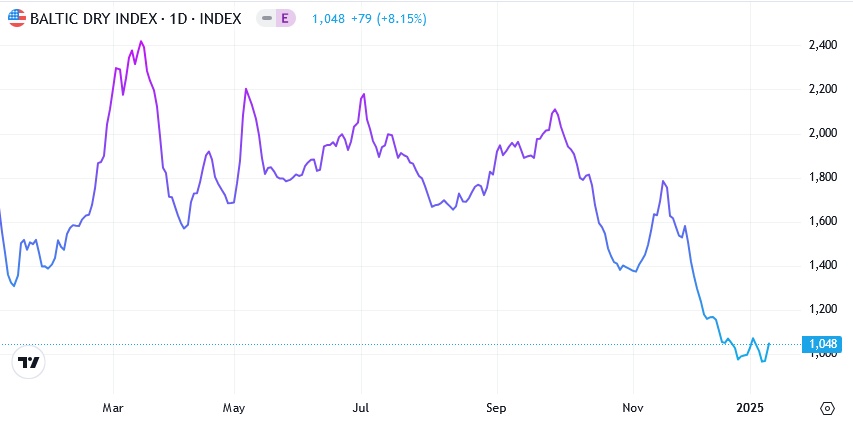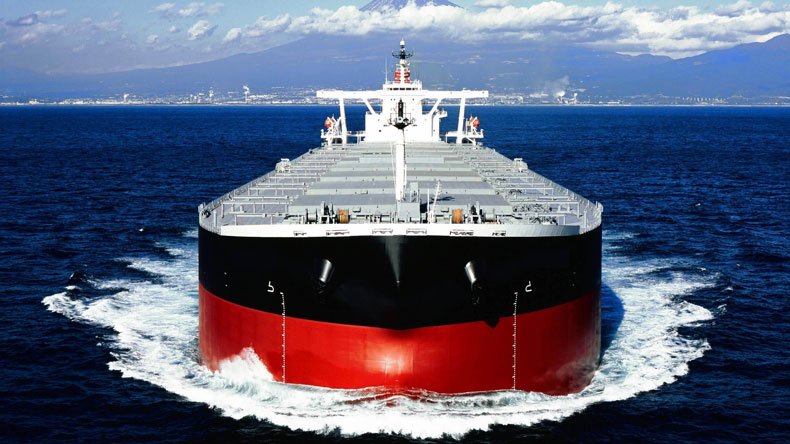The dry bulk market enters 2025 on a weak note, and historically, this often means January tends to be slower than usual. However, the stage is set for a rebound as mid-February approaches, thanks to several key factors.
🚢 Capesize vessels are facing a slow start, but there's a significant indicator that a Capesize rally could soon materialize.
Currently, a record number of VLOCs (Very Large Ore Carriers) are heading toward Brazil, and this has previously marked turning points for the market in late August 2022, early September 2023, and late August 2023. As these vessels position themselves, it will take some time for the space to clear for Capes to take charge.
Additionally, iron ore prices are on an upward trend, signaling firming market conditions starting late February and running through March.
🌱 The Panamax market has begun 2025 with a similar slow pace, with challenges in both the Atlantic and Pacific regions.
In the Atlantic, the initial firmness due to limited New Year tonnage soon gave way to flat levels. In the South Atlantic, oversupply led owners to offer discounted rates to secure cover.
In the Pacific, rates struggled, especially Indonesia, where limited cargo volumes and a growing tonnage list have pressured the market.
NoPac grains (North Pacific grains) and petcoke cargoes (Petroleum coke) provided some support, but Aussie rounds lagged behind. Despite these challenges, there’s optimism as ballasters are expected to head toward Brazil, bringing hope for a recovery during February’s soybean export season.
🌍 Meanwhile, the Supramax and Handysize markets have also struggled, experiencing subdued activity and downward pressure on rates, largely due to the impact of the holiday season and limited demand across both the Atlantic and Asia.
In the Atlantic, oversupply in the Continent-Mediterranean, South Atlantic, and US Gulf regions has kept rates soft.
In Asia, the market has been divided between prompt vessels facing pressure and others waiting for a better outlook. More activity is needed to shift the market sentiment here.

1 Year T/C Dry Bulk
📉 What awaits the market with Trump Administration 2.0 ?
The return of tariffs under the new Trump administration could disrupt dry bulk flows, but history suggests minimal impact.
In 2018, tariffs on US grains led to a shift in trade routes, with exports moving from China to markets like Brazil. Similarly, when Europe banned Russian coal, it found new buyers in China and India.
John Wobensmith of Genco Shipping & Trading noted that while tariffs can cause inefficiencies, trade flows continue, just in a less direct way. Wwhile retaliatory tariffs might affect dry bulk, they are unlikely to have a significant long-term impact as goods always find alternate routes.
🚨 What’s Next?
Looking ahead, the Capesize market is expected to rebound by mid-February. This is supported by VLOCs heading to Brazil, along with an expected increase in iron ore prices, which could signal a potential rally.
📉 For Panamax and smaller vessels, the market will likely remain cautious until February, with hopes that the Brazil soybean export season will bring more cargo volumes into play. However, the market could remain weak until a broader global trade recovery occurs, especially given China’s mixed economic signals.
2025 brings a cautious outlook for the dry bulk sector with 33 million dwt of new ships slated for delivery. While the order-book is smaller than 10% of the total fleet, which historically made the sector attractive for new investments, demand growth may not be enough to absorb the influx of new vessels. The lack of new orders in 2025 could actually help prevent a long-term collapse in the dry bulk market by setting the stage for recovery.

BDI Index 1Y
💬 Let’s connect!
What’s your outlook on the dry bulk market in 2025? Drop your thoughts in the comments below, and don’t forget to like and share this post 📰 !
$NMM
$SBLK (+3,68 %)
$SB (+3,59 %)
$PANL
$SHIP (-0 %)
$GNK (+3,82 %)
$HSHP
$GOGL (+1,44 %)


